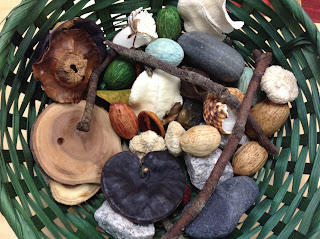I am a
preschool teacher and I tell parents all the time about how much fun their
child has playing with play dough (modeling clay) at school.
Parents,
in general, are grateful that we have this kind of simple activity, but they have
questions about how to do it at home, too. The most common inconvenience is how
to deal with the mess of little pieces of play dough all over the place.
It may
even become a little stressful for the parent, while for the toddler, it is a
stress relieve activity!
Here are
some of the benefits for your child to have fun with play dough and some
guidelines for you, the parent.

Playing with play dough is a wonderful sensory activity for your growing
toddler.
BENEFITS
- First
of all, it promotes creativity. Even if they do not realize it, their
brains are wandering, looking for ideas. And later, wondering, admiring
their achievements.
- It
is a calming activity. The softness or hardness of the play dough in their
hands and fingers is a soothing and curious experience. Exploring how it
feels and changes as they handle the play dough is fascinating to a
toddler.
- It
helps strengthen their fingers, hands, and wrist muscles. They can pat it,
squish it, roll it, pull it, mold it, cut it, and more!
- It
helps in the development of hand eye coordination which is the ability of
the eyes to direct attention and the hands to execute a function or a
movement.
- Confidence
builder. There is no right or wrong thing to make with play dough. It
opens a whole world of imagination; it can be anything they want.
- It's
a learning activity. Break it in to pieces and work on counting. Have
different colors and learn colors. Use play scissors and work on cutting
safely.
HOW TO DO IT
Playing
with play dough just requires some preparation so that it will not end up being
a stressful activity for parents at home or teachers at preschool.

- Have
a small designated table for play dough. A child size table is best so
they can sit upright and not on their knees to reach the top of the table.
You can buy a plastic placemat just for play dough playing and teach your
child that is where the play dough needs to stay.
- Give
them plenty of play tools and gadgets to explore play dough with.
- Play
with your toddler or sit with them and ask them what they are making.
Listen to how their imagination expands.
And most
important, give them praise, make positive remarks. It will bring a smile to
their face as their self esteem grows!
You can
go buy play dough together at the store or you can make your own play dough at
home. There are a lot of easy recipes for making play dough on the internet (Tipnut.com has some great recipes). Either way it will be fun
for your toddler!










.JPG)
.JPG)
.JPG)
.JPG)
.JPG)
.JPG)

.JPG)
.JPG)
.JPG)

.JPG)
.JPG)
.JPG)



